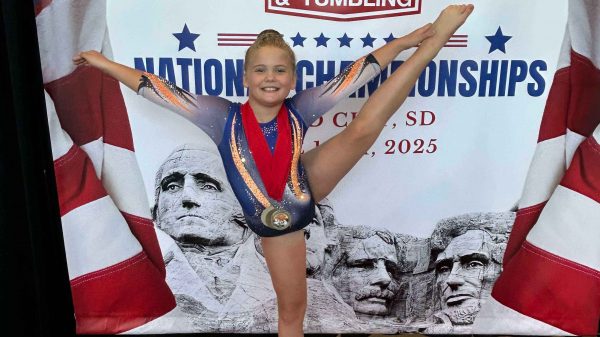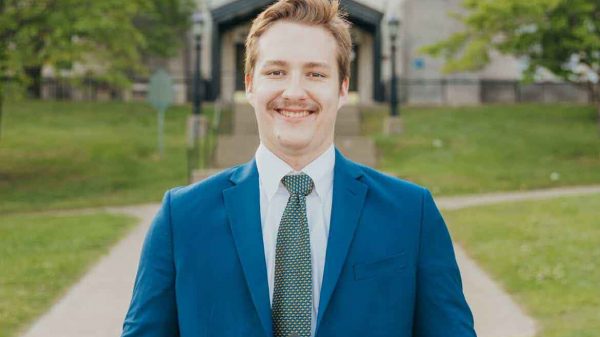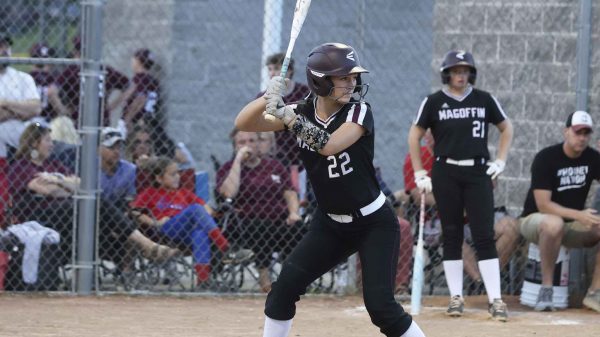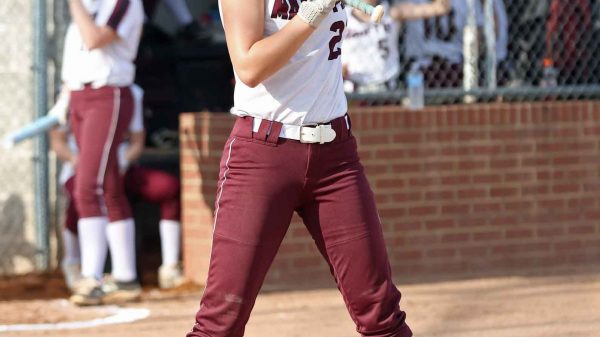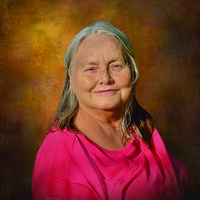As a parent with a child diagnosed with autism, I can tell you firsthand it’s very difficult to get a diagnosis and interventions if you live in this area, but the rate of the disorder is only growing, and the local resources just can’t keep up.
One in 36 children in the U.S. are diagnosed with an autism spectrum disorder (ASD), according to the CDC’s most recent statistics. Boys are four times more likely to be diagnosed with autism than girls.
The biggest hurdle in this region is just resources and the simple fact that there are not enough places offering diagnostic and therapy services for children with ASD. The Appalachian Valley Autism Center, based out of Pikeville and with an office in Prestonsburg, is the closest, but the waitlists are long. During the pandemic, many of the hospitals that served this region stopped accepting patients outside of their service area (meaning from a county near their hospital), shutting Eastern Kentucky off from many of the much-needed services.
Places like Nationwide Children’s Hospital, out of Ohio, and Marshall Health, in West Virginia, I’ve found can help children in this region with a diagnosis, but you also have to be careful about getting the right kind of testing if you have a certain location in mind for therapies. And remember you have to have a diagnosis to receive treatments (with the exception of speech therapy), so this long, convoluted waiting game takes away from early interventions, which every single expert in the field will tell you is key for a person’s prognosis with autism spectrum disorder.
Nationally, most children are not diagnosed until after the age of 4, even though autism can be diagnosed as early as age 2. There is no known cause for autism, nor cure for it, despite what many well-intentioned family members and neighbors may tell you while showing you some “magic” vitamins and other equally annoying and exploitive snake oil-like tactics. The only thing that is known to help is an array of therapies (speech, behavioral, occupational, etc.) targeted at helping the person with autism learn to navigate the world.
I knew my son was on the spectrum when he was 2 years old. He was sharp as a tack, but he wasn’t hitting his verbal and some social milestones. Speech was delayed, there was zero pointing, he struggled with eye contact except with people he knew well, and he would run back and forth (a form of stimming) when he was anxious.
It took six months for me to get him into speech therapy, even though we had filled out every form necessary and jumped through every hoop. Everything with this disorder is expensive and takes way more time than it feels like it should when you know they need help NOW.
While every family’s stories may not be the same as ours and I am by far not an expert, I know the pandemic definitely set us back a bit. He’d go on waitlists, then get dropped off them because of where we lived, or his level of severity wasn’t bad enough. He was 4 years old when he was finally diagnosed.
The schools helped a lot, with him receiving speech and occupational therapy on a regular basis, as well as some much-needed socialization.
Four years since I first mentioned to our pediatrician that he needed speech and I thought he was probably on the spectrum, at six years old he has yet another test scheduled for next week, which will hopefully open him up for some more local treatments since the places I’m looking at require ASOS testing and he was tested using a different set of criteria.
With April being National Autism Awareness Month, I tell you all of this to remind you to be kind. Autism makes up a decent portion of the population, so it’s going to affect you. Autism spectrum disorder has nothing to do with intelligence levels or abilities and it’s different for every single person with ASD. As our behavioral pediatrician tells us, “If you know one person with autism, you know one person with autism. No two are the same.”
Autism generally is a different way of thinking, and they experience the world differently than others do, but that doesn’t mean it’s a disability. It’s just a different ability.
You may sit in your house and hear a little background noise, but it’s generally quiet. Someone with autism may hear the air conditioner, your refrigerator running, the tv with the volume turned almost all the way down and the neighbor mowing his lawn – all at the same high volume. It can be overwhelming at times, and definitely hard to focus, but they can learn different strategies for living in the world with the rest of us. Just remember it may take more time and they’re fighting a battle you can’t see.
Also, for the autism families out there, you’re not alone. It’s a tough journey and you have to fight for every word your child says, every social milestone they need to hit and every appointment your child needs. It’s exhausting, and it’s expensive. People often can’t understand it unless they live it and it’s easy to feel alone in the struggle when your child is having a meltdown in the grocery store and you were only in there to pick up that one food they have to eat every day. It’s a lot, but it’s also amazing at times, so just remember to celebrate every milestone, no matter how silly it may seem.
My little boy blew bubbles in his milk this week. We’ve been trying to get him to blow on command for literally years. He just started saying “hello” and “bye-bye” when I pick him up and drop him off at school, but he can read and sound out any word he wants to (and has been able to for quite a while). He knows his multiplication and division facts up to 12, but he won’t tell me what he wants for supper. I’ve labeled everything in my house with a label maker and we have a song for every daily routine we do.
But I’ll tell you, when you work that hard for every little thing, having your child tell you “nighty night” and “I love you” while holding your face and looking you straight in the eye, it hits different.
I’m going to include some statistics from AutismSpeaks.org, but feel free to look up more about ASD (using credible, science-backed sources, of course) and teach your children about autism, as well.
Autism Statistics
From Autism Speaks, AUTISMSPEAKS.ORG
Autism Prevalence
In 2023, the CDC reported that approximately 1 in 36 children in the U.S. is diagnosed with an autism spectrum disorder (ASD), according to 2020 data.
Boys are four times more likely to be diagnosed with autism than girls.
Most children were still being diagnosed after age 4, though autism can be reliably diagnosed as early as age 2.
31% of children with ASD have an intellectual disability (intelligence quotient [IQ] <70), 25% are in the borderline range (IQ 71–85), and 44% have IQ scores in the average to above average range (i.e., IQ >85).
Autism affects all ethnic and socioeconomic groups.
Minority groups tend to be diagnosed later and less often.
Early intervention affords the best opportunity to support healthy development and deliver benefits across the lifespan.
There is no medical detection for autism.
What causes autism?
Research indicates that genetics are involved in the vast majority of cases.
Children born to older parents are at a higher risk for having autism.
Parents who have a child with ASD have a 2 to 18 percent chance of having a second child who is also affected.
Studies have shown that among identical twins, if one child has autism, the other will be affected about 36 to 95 percent of the time. In non-identical twins, if one child has autism, then the other is affected about 31 percent of the time.
Over the last two decades, extensive research has asked whether there is any link between childhood vaccinations and autism. The results of this research are clear: Vaccines do not cause autism.
Intervention and Supports
Early intervention can improve learning, communication and social skills, as well as underlying brain development.
Applied behavior analysis (ABA) and therapies based on its principles are the most researched and commonly used behavioral interventions for autism.
Many children affected by autism also benefit from other interventions such as speech and occupational therapy.
Developmental regression, or loss of skills, such as language and social interests, affects around 1 in 5 children who will go on to be diagnosed with autism and typically occurs between ages 1 and 3.
Associated Challenges
An estimated 25-30 percent of people with autism are nonverbal or minimally verbal (fewer than 30 words or unable to use speech alone to communicate)
31% of children with ASD have an intellectual disability (intelligence quotient [IQ] <70) with significant challenges in daily function, 25% are in the borderline range (IQ 71–85).
Nearly half of those with autism wander or bolt from safety.
Nearly two-thirds of children with autism between the ages of 6 and 15 have been bullied.
Nearly 28 percent of 8-year-olds with ASD have self-injurious behaviors. Head banging, arm biting and skin scratching are among the most common.
Drowning remains a leading cause of death for children with autism and accounts for approximately 90 percent of deaths associated with wandering or bolting by those age 14 and younger.
Associated Medical & Mental Health Conditions
Autism can affect the whole body.
Attention Deficient Hyperactivity Disorder (ADHD) affects an estimated 30 to 61 percent of children with autism.
More than half of children with autism have one or more chronic sleep problems.
Anxiety disorders affect an estimated 11 to 40 percent of children and teens on the autism spectrum.
Depression affects an estimated 7% of children and 26% of adults with autism.
Children with autism are nearly eight times more likely to suffer from one or more chronic gastrointestinal disorders than are other children.
As many as one-third of people with autism have epilepsy (seizure disorder).
Studies suggest that schizophrenia affects between 4 and 35 percent of adults with autism. By contrast, schizophrenia affects an estimated 1.1 percent of the general population.
Autism-associated health problems extend across the life span – from young children to senior citizens.
Nearly a third (32 percent) of 2 to 5 year olds with autism are overweight and 16 percent are obese. By contrast, less than a quarter (23 percent) of 2 to 5 year olds in the general population are overweight and only
10 percent are medically obese.
Risperidone and aripiprazole, the only FDA-approved medications for autism-associated agitation and irritability.
Caregivers & Families
On average, autism costs an estimated $60,000 a year through childhood, with the bulk of the costs in special services and lost wages related to increased demands on one or both parents. Costs increase with the occurrence of intellectual disability.
Mothers of children with ASD, who tend to serve as the child’s case manager and advocate, are less likely to work outside the home. On average, they work fewer hours per week and earn 56 percent less than mothers of children with no health limitations and 35 percent less than mothers of children with other disabilities or disorders.
Autism In Adulthood
Over the next decade, an estimated 707,000 to 1,116,000 teens (70,700 to 111,600 each year) will enter adulthood and age out of school based autism services.
Teens with autism receive healthcare transition services half as often as those with other special healthcare needs. Young people whose autism is coupled with associated medical problems are even less likely to receive transition support.
Many young adults with autism do not receive any healthcare for years after they stop seeing a pediatrician.
More than half of young adults with autism remain unemployed and unenrolled in higher education in the two years after high school. This is a lower rate than that of young adults in other disability categories, including learning disabilities, intellectual disability or speech-language impairment.
Of the nearly 18,000 people with autism who used state-funded vocational rehabilitation programs in 2014, only 60 percent left the program with a job. Of these, 80 percent worked part-time at a median weekly rate of $160, putting them well below the poverty level.
Nearly half of 25-year-olds with autism have never held a paying job.
Research demonstrates that job activities that encourage independence reduce autism symptoms and increase daily living skills.
Economic Costs
The cost of caring for Americans with autism had reached $268 billion in 2015 and would rise to $461 billion by 2025 in the absence of more-effective interventions and support across the life span.
The majority of autism’s costs in the U.S. are for adult services – an estimated $175 to $196 billion a year, compared to $61 to $66 billion a year for children.
On average, medical expenditures for children and adolescents with ASD were 4.1 to 6.2 times greater than for those without autism.
Passage of the 2014 Achieving a Better Life Experience (ABLE) Act allows tax-preferred savings accounts for people with disabilities, including autism, to be established by states.
Passage of autism insurance legislation in all 50 states is providing access to medical treatment and therapies.
From Autism Speaks
Autismspeaks.org



